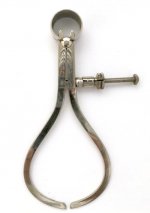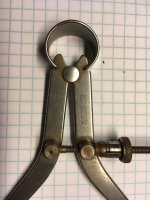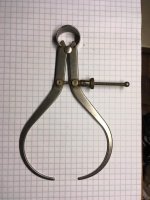SalemRule
Cast Iron
- Joined
- Jul 26, 2018
Do modern Starrett Calipers share Charles Fay Springfield 1885 or 1886 Patents ?
Do modern Starrett Calipers share Charles Fay Springfield 1885 or 1886 Patents ?
The Quick-Adjust on these Calipers just seems to be very complex, and not terribly easy to use.
I'm not sure if Stevens or Starrett continued their use, and for how long.




US319215A - Spring-calipers - Google Patents
US Patent: 334,764 - Rapidly Adjusting Nut for Calipers and Dividers
79B-4 “Yankee” Spring-Type Caliper, Outside, 4" Size and Capacity, Quick-Spring Nut, Flat Leg
Do modern Starrett Calipers share Charles Fay Springfield 1885 or 1886 Patents ?
The Quick-Adjust on these Calipers just seems to be very complex, and not terribly easy to use.
I'm not sure if Stevens or Starrett continued their use, and for how long.




US319215A - Spring-calipers - Google Patents
US Patent: 334,764 - Rapidly Adjusting Nut for Calipers and Dividers
79B-4 “Yankee” Spring-Type Caliper, Outside, 4" Size and Capacity, Quick-Spring Nut, Flat Leg
Last edited:






















